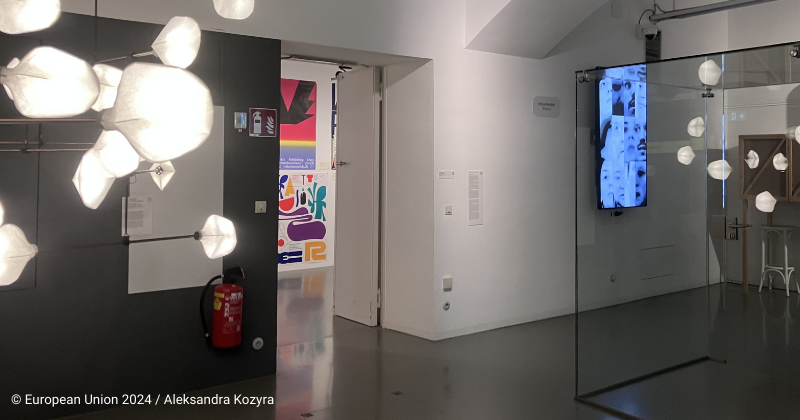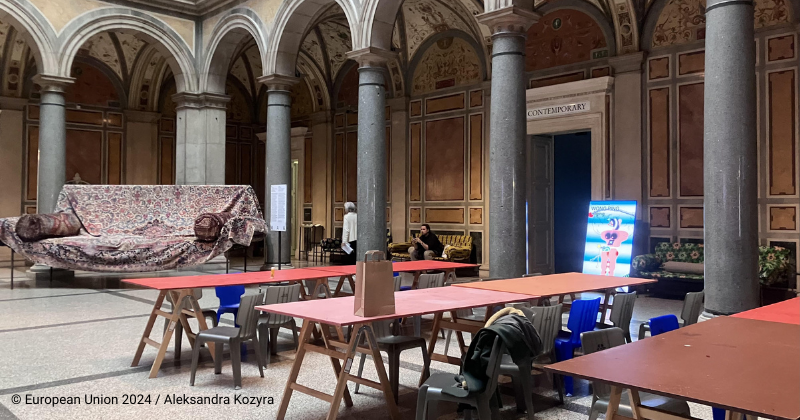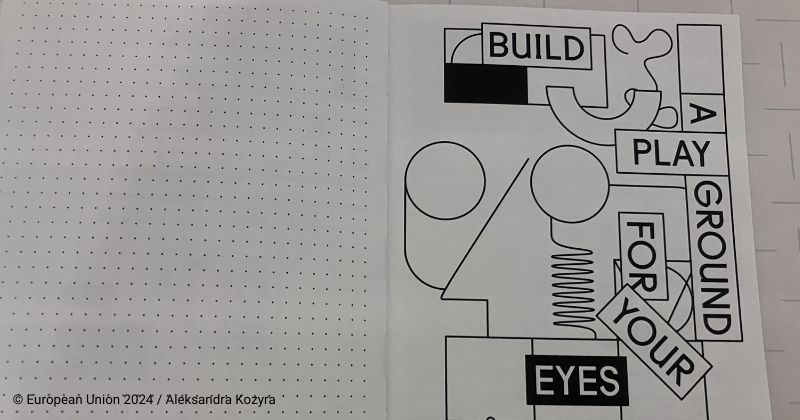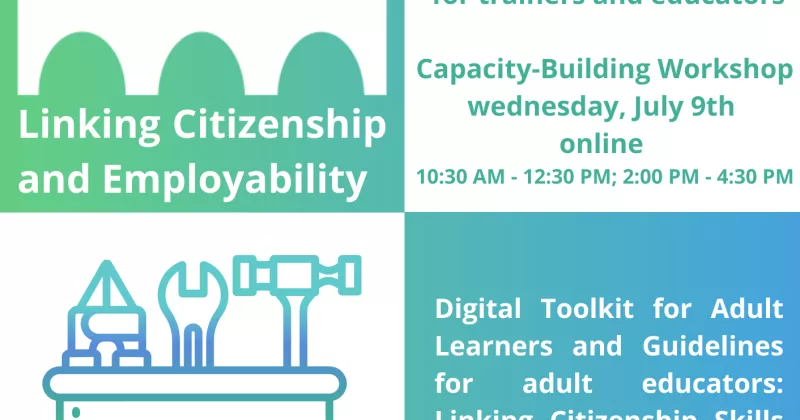A playground for your eyes: spaces for learning about sustainable development

What does it mean to create an inviting environment for learning about sustainable development? EAEA’s Aleksandra Kozyra visits an exhibition on critical consumption and explores museums as a space for learning.
For the past six months, at EAEA we’ve been meeting with learners and educators who are trying to imagine a sustainable future – and putting their ideas into practice. This is the main idea behind our podcast Beyond Learning, which we launched last September. When planning out the first batch of episodes, it quickly became apparent to us that the “where” was just as important as the “what” and the “who”: together with my colleagues, we realised that we didn't want to talk about the green transition on Zoom, and we’d like to instead explore learning spaces in all their diversity.
After seven episodes on topics ranging from bottom-up community building to upcycling and green public spaces - which we recorded mostly in Brussels, in urban gardens, at sewing classes and festivals, to only name a few - we felt that we had barely scratched the surface. Several of these conversations inspired us to shift our focus to the topic of identity and belonging, and the social dimension of sustainable development. We also thought it would be interesting to record our interviews outside of Belgium, but without necessarily taking several flights. This is how at the end of January I found myself on a train from Brussels to Vienna, my agenda packed with meetings across Central and South-Eastern Europe: in Linz, Budapest, Belgrade, Ljubljana, and a return flight from Zagreb scheduled for two weeks later.
Colours, comfort - and warmth
I've been to Vienna multiple times. Whenever I visit, I end up in the Museums Quarter, which to me is a fantastically multifunctional space that combines cultural and social dimensions of learning. I find museums and other cultural spaces welcoming in their familiarity: it feels reassuring to know that there will be a trail I will follow, a topic I will get to explore – sometimes from unexpected angles – and a gift shop at the end, where I will inevitably spend too much on completely unnecessary stationery. This time, I asked my Austrian colleague for museum recommendations in a different neighbourhood, which is how I find myself spending part of my Sunday at the MAK – Museum of Applied Arts, visiting an exhibition on Critical Consumption.
At the MAK, I feel a sense of warmth as soon as I enter the building, and I’m immediately reminded of the fact that I crossed over a (mostly imaginary, and contested) border between Western and Central Europe. As metaphorical as this might sound, it’s actually a physical feeling: Austria, contrary to Belgium, keeps the heating on also in public spaces. Combined with large tables and colourful couches, it makes the entry hall feel inviting, the kind of space where you could sit down after visiting the exhibition to share your reflections with someone else, or just to shelter from the cold outside.

At the same time, one of the objects visibly stands out: a sofa so imposing that it is presumably a work of art. A quick look at the accompanying explanation tells me that it is indeed the case and that the “Sofa” by Gellatin is an indirect reference to Sigmund Freud, which is perhaps why I don’t feel particularly encouraged to sit down on it. Instead, I look up to admire the building - Google tells me later that it was designed by Heinrich von Ferstel in 1871, in the style of Florentine Renaissance - and I notice a golden statue of a man on the atrium. I get my tickets and quickly make my way downstairs where the exhibition starts.
From information to exploration
The exhibition on Critical Consumption is easy to navigate, with a clear structure and a minimalist white background. At the starting point, I find infographics that introduce key statistics: from the proportion of global CO₂ emissions that the textile industry is responsible for (10%), to the average number of clothing items consumers buy in Europe (a whooping 60 per year), and the global trajectory of a T-shirt (that’s easily 30,000 kilometres: from the US, to Turkey and Taiwan, and then China and Bangladesh, before making its way to Austria).
Some parts of the exhibition feel exploratory: I take time to watch a recorded art performance, contextualised with excerpts of newspaper articles on textile factory fires and workers’ unions across the globe. Other exhibits are directly instructional: early on, I see a large board with a set of recommendations on critical consumption of fashion, which encourages me to buy vintage and to upcycle old clothes.
I continue exploring the museum, curious if there are any exhibits that could be used in an educational setting. I spot a few resources that seem perfect for a workshop: a notebook on Social movement design and later, at the MAK Design Lab located on the same floor, a toolkit to discover the Pyramid of Technology. They’re both behind glass, impossible to browse.

Finally, I found my personal favourite: the Notebook for Change, produced by the MAK to foster ideas for a sustainable city. The notebook, developed by a group of designers and researchers, is intended as an instrument of participation. It asks users questions about their city and how it could be reimagined in a creative way. As expected, I soon find myself in the gift shop, getting a copy of the notebook for myself.
Before leaving, I sit down at one of the large tables in the entry hall and browse through the notebook. “Build a playground for your eyes”, asks one of the pages. I recall some of the initiatives shared by the educators that I’ve interviewed over the past few months: from a sewing class where learners bring in their old fabrics to completely reimagine them, to a community that learned to design and build their space with the support of a group of architects. I turn back from the statue in the atrium and instead look at the city outside: to me, a good space for learning is always a bit of a playground.
Explore learning, identity and belonging with the EAEA podcast Beyond Learning. New episodes are released every other Thursday on the EAEA website, Spotify and Apple Podcasts. The first season: A Greener Future, is now available, including complementary material on learning.eaea.org.





